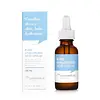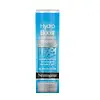What's inside
What's inside
 Key Ingredients
Key Ingredients

 Benefits
Benefits

 Concerns
Concerns

 Ingredients Side-by-side
Ingredients Side-by-side

Water
Skin ConditioningPropanediol
SolventGlycerin
HumectantPentylene Glycol
Skin ConditioningNiacinamide
SmoothingPhenoxyethanol
PreservativeButylene Glycol
HumectantPEG-60 Hydrogenated Castor Oil
EmulsifyingAmmonium Acryloyldimethyltaurate/Vp Copolymer
Caprylyl Glycol
EmollientEthylhexylglycerin
Skin ConditioningChondrus Crispus Powder
AbrasiveCeramide AP
Skin Conditioning1,2-Hexanediol
Skin ConditioningAcrylates/C10-30 Alkyl Acrylate Crosspolymer
Emulsion StabilisingTromethamine
BufferingPanthenol
Skin ConditioningSodium Hyaluronate
HumectantSynthetic Fluorphlogopite
Agar
MaskingGellan Gum
Parfum
MaskingDisodium EDTA
Tocopheryl Acetate
AntioxidantAlgin
MaskingSucrose
HumectantChondrus Crispus Extract
Skin ConditioningArginine
MaskingPCA
HumectantSerine
MaskingAlanine
MaskingCitric Acid
BufferingThreonine
Mourera Fluviatilis Extract
Skin ConditioningTitanium Dioxide
Cosmetic ColorantMica
Cosmetic ColorantWater, Propanediol, Glycerin, Pentylene Glycol, Niacinamide, Phenoxyethanol, Butylene Glycol, PEG-60 Hydrogenated Castor Oil, Ammonium Acryloyldimethyltaurate/Vp Copolymer, Caprylyl Glycol, Ethylhexylglycerin, Chondrus Crispus Powder, Ceramide AP, 1,2-Hexanediol, Acrylates/C10-30 Alkyl Acrylate Crosspolymer, Tromethamine, Panthenol, Sodium Hyaluronate, Synthetic Fluorphlogopite, Agar, Gellan Gum, Parfum, Disodium EDTA, Tocopheryl Acetate, Algin, Sucrose, Chondrus Crispus Extract, Arginine, PCA, Serine, Alanine, Citric Acid, Threonine, Mourera Fluviatilis Extract, Titanium Dioxide, Mica
 Reviews
Reviews

Ingredients Explained
These ingredients are found in both products.
Ingredients higher up in an ingredient list are typically present in a larger amount.
Sodium Hyaluronate is hyaluronic acid's salt form. It is commonly derived from the sodium salt of hyaluronic acid.
Like hyaluronic acid, it is great at holding water and acts as a humectant. This makes it a great skin hydrating ingredient.
Sodium Hyaluronate is naturally occurring in our bodies and is mostly found in eye fluid and joints.
These are some other common types of Hyaluronic Acid:
Learn more about Sodium HyaluronateWater. It's the most common cosmetic ingredient of all. You'll usually see it at the top of ingredient lists, meaning that it makes up the largest part of the product.
So why is it so popular? Water most often acts as a solvent - this means that it helps dissolve other ingredients into the formulation.
You'll also recognize water as that liquid we all need to stay alive. If you see this, drink a glass of water. Stay hydrated!
Learn more about Water